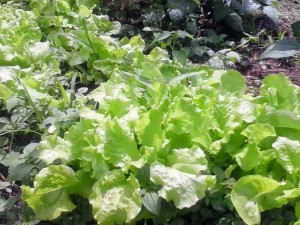There’s nothing quite like putting those first few seeds in the ground in the spring time. But, there is something to be said for sowing in late summer, too. I look at our giant garden right now — and even though there is a blister on my thumb from snapping beans — feel sad that there will be months when I won’t be able to walk out and get a tomato or a squash for dinner. This year, we are going to have a fall/winter garden so the fresh food can go on!
The most important part of planning a winter garden is counting days. For plants like beets, which do well when it’s chilly but can’t take frost, you look at the days to maturity and the average first frost date for your area. For example, I want to grow some Chioggia Beets this fall. It takes 52 days for them to reach maturity. The average first frost date for Chattanooga is October 15. Today is August 18, so I better get the seed in the ground…immediately!
Other plants, such as spinach and kale are frost tolerant, so the counting of days is less important. We will mix together turnip green, mustard, spinach, and kale seed and broadcast them for a mixed greens patch that will provide beans right up through December or so. That’s the plan, anyway.
There are plenty of vegetables for a fall/winter garden: onions, broccoli, cabbage, garlic, greens, and many root crops. It’s not exactly the same as a bounty of tomatoes and corn, but even a little bit of time in the garden and fresh produce on the table does a body good! Do you regularly grow fall and winter vegetables?
